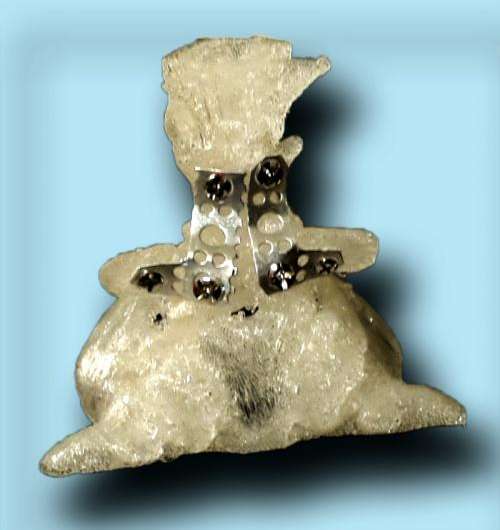At Auburn University, the latest in printing technology is literally going to the dogs, cats and other animals. Auburn's College of Veterinary Medicine is among the first veterinary programs in the United States to use three-dimensional printing and models in advance of complicated surgeries.
A 3D printer builds up objects layer by layer, using various methods to deposit and harden the 'ink' where it is needed. Many materials, including plastic, metal and ceramic can now be printed based on instructions from computer-assisted design programs.
In the college's Department of Clinical Sciences, the radiology section has begun using its newly-acquired Makerbot 3D printer to investigate ways to improve surgical planning. In its first week of use, the 3D printer was successfully used to provide a solution for a complicated surgical procedure before the surgery was performed.
"Using the 3D technology proved extremely helpful in planning a surgical procedure for a small dog," said Dr. Don Sorjonen, a professor emeritus of neurology and neurosurgery who has returned to the college as a consultant.
"In this particular case, a 1.4 kilogram Yorkshire terrier had an instability of the first and second cervical vertebrae," Sorjonen said. "The joint was not only unstable but also was not aligned properly. Because of the dog's small size, we did not have the proper implants to make the repair. After producing a physical model of the dog's vertebrae using the 3D printer, we could accurately measure the cervical vertebrae and order plates and screws specially suited for the repair. Being able to craft a remedy prior to surgery increased the chances of a successful outcome."
"Thanks to a computer we were able to create a 3D model on a screen, but allowing this model to be printed gives us an excellent tool for communicating with our colleagues and clients," said radiology resident Dr. Adrien-Maxence Hespel.
"The 3D printer allows the surgeons to evaluate more approaches to solve a problem preoperatively and may help them in deciding which solution is optimal for the patient," Hespel added. "By having a prototype in their hands, surgeons can narrow their choice of surgical implants ahead of time. As the models can be sterilized, they can even be used during surgery as a quick reference."
The printer also has been used to create an anatomy model to study a bone fracture and conduct an equine research project.
The Makerbot 3D printer was the first technology grant awarded by the college's Information and Instructional Technology Committee. Hespel applied for the grant, along with Dr. Judith Hudson and Dr. Ronald Montgomery.
Hespel, a native of France and a graduate teaching assistant in the College of Veterinary Medicine, said he had long thought that the ability to recreate objects in 3D would really help the veterinary medicine teaching hospital but it has only recently become available.
Ashley Burt, director of Information and Instruction Technology for the college and a member of the IIT committee, says the printer was the perfect choice for the committee's first technology grant award.
"The grant program was established to foster innovation in the college that will leverage the world-class facilities that have been and are being built," Burt said. "Initially this printer is being used to investigate ways of improving surgical planning. However, there are many other teaching opportunities afforded by this technology and we are hopeful that other faculty members will develop new and innovative applications to aid in our instructional mission."
Provided by Auburn University
























